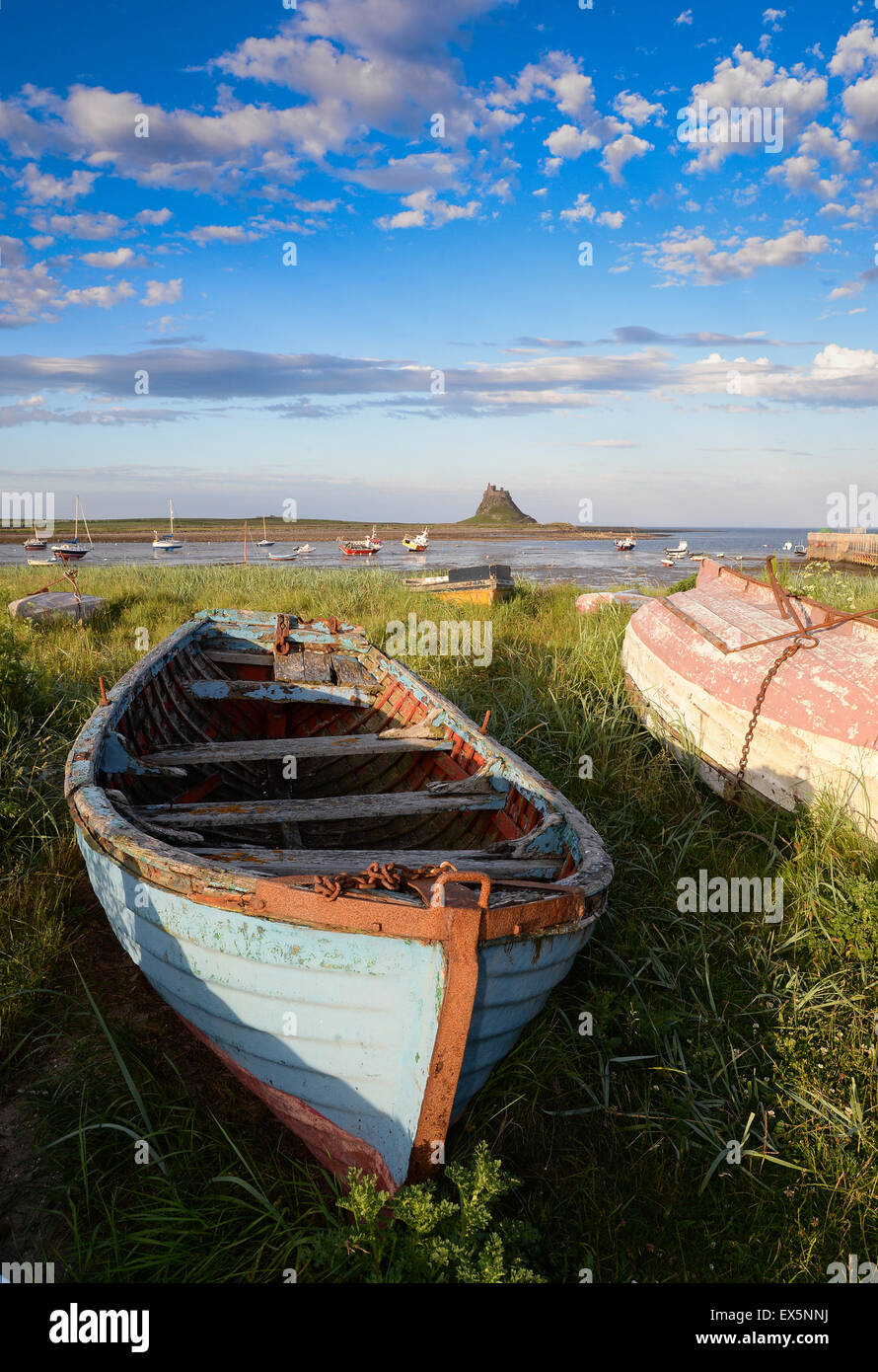Lindisfarne Castle viewed from the harbour on the Holy Island of Lindisfarne off the Northumberland coast

Image details
Contributor:
James R Gibson / Alamy Stock PhotoImage ID:
EX5NNJFile size:
45 MB (2.8 MB Compressed download)Releases:
Model - no | Property - noDo I need a release?Dimensions:
3280 x 4791 px | 27.8 x 40.6 cm | 10.9 x 16 inches | 300dpiDate taken:
30 June 2015Location:
lindisfarne, holy island, northumberland, united kingdom,More information:
Lindisfarne or Holy Island, is approached over a causeway at low tide. Chosen as a religious site. From the mainland, Lindisfarne island can be seen with the castle mounted on top of its highest point, but for several centuries the island's focal point was the Priory, on flatter land to the south-west. In 635, St. Aidan founded the first community of monks here and his famous successor St. Cuthbert was honoured in 1082 by the re-building of the Priory by Benedictine monks. It's position in the North Sea made it vulnerable to attack both from the Scots and the Norsemen and by Tudor times, the need for a more impressive fortification resulted in the fort on Beblowe Crag that from 1570-2 formed the basis of the present castle. Of course by this time, Henry VIII had dissolved the priory and his troops used the Church as a navy storehouse. Elizabeth I also had work carried out on the fort, strengthening it and providing gun-platforms for the latest developments in artillery. With the accession of James VI of Scotland to the English throne, the major defensive role of the castle declined, though it was still garrisoned from Berwick. In the 18th century, the castle was occupied overnight by Jacobite rebels, but was quickly re-captured by soldiers from Berwick, where they were then imprisoned. Incredibly, the rebels managed to burrow their way out and hid for nine days near Bamburgh Castle just down the coast from Lindisfarne, before making good their escape. In later years it was used as a coastguard look-out point. Charles Rennie Mackintosh made a sketch of the old fort in 1901. The present appearance of Lindisfarne Castle came about through the founder of Country Life magazine, Edward Hudson. In 1901, he came across the decaying and empty castle and saw its potential as a unique and Romantic holiday home. He called on his favourite architect, Edwin Lutyens, to re-fashion a retreat for himself and his friends. Lutyens entered wholeheartedly into the scheme.